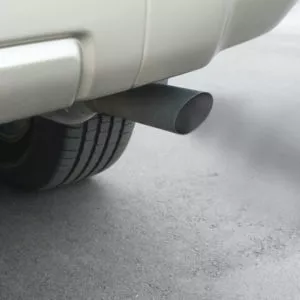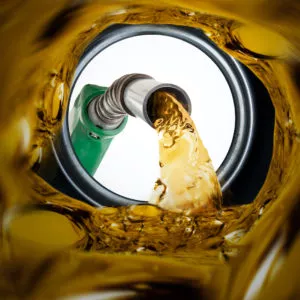Because your check engine light is on, you plug in your scan tool into the OBD-II port to check what the issue is. Turns out, the P0455 code has been stored.
While you might be looking at a potential gas cap issue, don’t dismiss the fact that another problem might have triggered this trouble code. What does this code mean and what problems could be causing it? Could you still drive with a code P0455 present? Answer all these questions and more with this quick guide.
What Does the P0455 Code Mean?
Diagnostic trouble code (DTC) P0455 stands for “Evaporative Emission Control System (EVAP) Large Leak Detected”. Your car’s computer will set the code when it determines there’s a significant leak in the EVAP system.
Users have reported code P0455 for the following makes: Chevrolet (especially on a Chevy Silverado), Dodge, Ford, Jeep, and Nissan.
P0455 on Some Chevrolet Vehicles
Code P0455 may appear on some Chevy vehicles. On a 2010 Chevrolet Silverado 1500 LS 5.3L V8, for example, this DTC is set when “the EVAP system is not able to achieve or maintain a calibrated level of vacuum within a set amount of time.”
The code appears in a 2010 Chevrolet Silverado 1500 5.3L V8 because of the following conditions:
- The ignition voltage is between 11–32 volts.
- The barometric pressure (BARO) is more than 70 kPa.
- The fuel level is between 10–90 percent.
- The engine coolant temperature (ECT) is less than 35°C (95°F).
- The intake air temperature (IAT) is between 4–30°C (39–86°F).
- DTC P0455 runs once per cold start when the above conditions are met.
For the circuit/system testing of Chevy vehicles, it’s important to note that larger volume fuel tanks and/or those with lower fuel levels may require several minutes for the floating indicator to stabilize.
Note: The definition of trouble code P0455 may be different depending on the vehicle manufacturer. Consult the appropriate repair manual or repair database for the exact code definition.
What Is an EVAP System and How Does It Work?
Okay, that’s great. But you’re probably wondering: what’s an EVAP system? It’s a collection of components that work together to prevent fuel vapors from escaping into the atmosphere.
The system does this because fuel vapors contribute to pollution and smog formation. These vapors also contain chemicals that are toxic to humans and wildlife.
Emissions tests rely on the vehicle’s onboard diagnostic system to regulate environmental regulations. It’s why vehicles must have no active trouble codes for the vehicle to pass an emissions test.

The EVAP system creates a sealed environment designed to capture, store, and purge volatile fuel vapors from the fuel system.
The key components found within an EVAP system include the fuel tank, gas cap, purge and vent valve, purge and vent solenoid, pressure and flow sensors, and EVAP (charcoal) canister.
When the engine is off, fuel vapors are stored in the charcoal canister, rather than being allowed to escape into the atmosphere.
Once the engine is running and the appropriate conditions are met, the purge valve opens to allow the vapors to enter the engine, where they’re burned. A vent valve gives the EVAP system access to fresh air, but it’s closed when the system is testing itself for leaks.
Your engine control module (ECM) controls both the purge and vent valves via electronic solenoids. The ECM also monitors EVAP system operation, checking for leaks and other issues.
EVAP System Tests and the P0455 Code
To ensure that the EVAP system is working properly, the PCM performs fuel vapor leak tests. These tests might occur when your vehicle is parked (the engine is switched off) or while it’s running.
During these vapor leak tests, the ECM sends a signal to close the vent and purge control valves. After that, the ECM monitors the entire system for pressure changes or vacuum loss. The ECM then stores codes depending on the potential size of the leak. Large leaks are recorded as code P0455, while small leaks are recorded as P0456.
What are the Possible Causes of the P0455 Code?
Wondering what’s causing the issue? Here are some of the possible reasons why you’re getting this OBD-II code:
- Gas cap is missing, left open, or not secured properly
- Gas cap is faulty or damaged
- Fuel tank filler neck is deformed
- Fuel tank is cracked or damaged
- Fuel tank pressure sensor is faulty
- Charcoal EVAP canister is cracked or damaged
- Faulty EVAP canister purge solenoid
- Faulty EVAP canister vent valve
- Faulty EVAP canister vent solenoid
- EVAP hoses and clamps are disconnected, cracked, or punctured
- EVAP vent solenoid is faulty or stuck open
- EVAP purge valve is faulty and stuck open
What are the Common Symptoms of the P0455 Code?
You may might notice the following symptoms if you drive a vehicle with a P0455 trouble code:
- Check Engine Light is on
- Possible fuel smell (rather uncommon)
- Slightly increased fuel consumption (rather uncommon)
- Starting issues (rather uncommon)
- Stalling (rather uncommon)
How to Diagnose the P0455 Code
When trying to diagnose a P0455 code, the first thing a layperson should do is make sure the gas cap is on tight. A loose or faulty gas cap can easily trigger the code. If tightening the gas cap doesn’t work, you might want to try purchasing and installing a new gas cap, since doing so is cheap and easy.
Keep in mind: once you’ve tightened or replaced the gas cap, you’ll have to clear the code with a code reader or scan tool afterward. The code won’t immediately go away on its own.
If the gas cap doesn’t solve the problem, you’ll need to dig further. There are numerous potential causes for OBD-II code P0455. As such, diagnosis can be difficult. For an idea of how to troubleshoot the code, check out the videos below:
How to Fix the P0455 Code
Disclaimer: Due to the wide variability in vehicle makes and models, as well as other factors, the following information must not be construed as complete or the only definitive way to address a particular issue. Instead, the following content merely attempts to give you a better idea of what a do-it-yourself approach to the issue might involve. You are encouraged to find more technical resources regarding the subject or take your vehicle to a professional technician for the best results.
Before attempting to fix a P0455 trouble code, you might want to check for potential technical service bulletins (TSBs) and recalls first. Having said that, you won’t typically find any TSBs related to code P0455.
Vehicle manufacturers issue TSBs to notify dealerships and technicians about an issue surrounding a specific model, and they also include the steps on how to resolve the problem. But remember, just because there’s a published TSB, it doesn’t mean the concern will be repaired free of charge unless the vehicle is still under warranty.
Many aftermarket companies also republish these TSBs for independent technicians and auto repair shops.
You can check TSBs on your own using authoritative sites from organizations like the National Highway Traffic Safety Administration (NHTSA) and Environmental Protection Agency (EPA). You’ll need to enter your vehicle’s identification number in the search bar to check for make-model information.
If there aren’t any recalls or TSBs about your vehicle, here are some alternative solutions to resolve the code.
Inspect the Gas Cap
The first thing you can try is to inspect the gas cap. Dirt or grime buildup might prevent it from sealing properly, and spraying WD-40 might do the trick.
But if you notice some cracks along the gas cap, it might be time to replace it with a new one to prevent any leaks.
If you’re seeing DTC P0455 on your Hyundai vehicle, check the gas cap’s sealing area. The cap’s gasket might have shrunk or the fuel filler neck might have sprung a leak. Greasing the gasket could help. Also make sure that when you close the cap, it clicks into place.
If the gas cap isn’t the problem, the next thing you should check is the EVAP system.

Test the EVAP System for Leaks
To test the system for leaks, it should be pressurized to a level below 1 PSI. The system is usually pressurized with nitrogen through a special regulator from a special machine.
If the pressure falls below the normal range, it’s confirmed that there is indeed a leak in the system. A large leak is usually easy to find unless it’s hidden inside the canister purge or vent valves.
There are two primary ways to check for leaks in the EVAP system beyond a good visual inspection.
The first one is via smoke machine testing, which involves introducing smoke under low pressure from a machine.
The other method is nitrogen gas pressurization, which introduces gas in the fuel system. The service technician typically uses amplified headphones to listen for leaking air.
Note that you probably won’t have the ability to do either of these because you don’t have the equipment. Most shops use a smoke machine that puts pressurized smoke in the system, which will exit at the point of the leak for visual detection.
Check the Canister Purge and Vent Valves
Check the canister purge and vent valves. The canister purge valve is normally closed, and the PCM only opens this during purging.
Meanwhile, the canister vent valve is normally open and the PCM only closes it whenever EVAP leak testing is under way. Further, the PCM won’t do a leak test if the fuel level is above 85% or below 15%, so you could have a leak and not see a code if you run your tank near empty or nearly full all the time.
The canister purge valve is linked to the intake manifold vacuum using a rubber hose, drawing gasoline vapors from the charcoal canister into the engine when it’s open. The canister vent valve is connected to the canister air inlet.
To test the canister purge valve, make sure that the engine is turned on. This is usually placed behind the intake and beside the throttle body.
Once you’ve located the valve, place a finger in the vacuum port and check for suction. If you feel that your finger is being sucked into the valve, it means that it’s stuck and should be replaced.
The Bottomline

Always keep in mind that resolving trouble codes on your own comes with risks, especially if you’re not well-versed in automotive repair. Of course if all you need to do is replace the gas cap, well, you can handle that with ease.
Performing the repair procedure incorrectly can lead to further complications and might even result in a more expensive repair bill. So if you’re not confident in your DIY skills yet, it’s best to leave the job to the pros instead.
But if you think you can handle the job on your own, make sure to have the right tools and information before proceeding.
Frequently Asked Questions About the P0455
Can I Keep Driving With the P0455 Code?
Yes, you can, but your vehicle will be creating excess emissions if there’s a fuel vapor leak. You’re engine’s exhaust is already emitting toxic gases, and your faulty EVAP system will add to that.
How Much Does It Cost to Fix a P0455 Code?
The cost will depend on the cause. Replacing a faulty gas cap is not going to cost more than $25. However, if there are issues with your fuel or EVAP system, then you can expect to pay several hundred dollars on parts and labor.
Other Notes About Code P0455
Aside from the symptoms listed above (i.e., activated check engine light and slight fuel smell), there may be no other noticeable symptoms for the P0455 trouble code. As such, this code may not be considered severe. Note that fuel economy issues may arise as a result of fuel vapor leaks. And so, like other diagnostic trouble codes, P0455 should be addressed immediately to avoid potential fuel mileage problems and other complications concerning the emission control system and other vehicle components.
Also, an evaporative emission control system leak doesn’t only pollute the air while the vehicle is running. Harmful evaporative emissions can be released into the atmosphere 24/7 from a hole as small as a pinprick. This is why it’s important to consult a licensed mechanic when faced with a P0455 engine code as soon as you have ruled out a gas cap issue.
There are other diagnostic trouble codes related to code P0455. These include P0450, P0451, P0452, P0453, P0454, P0456, P0457, P0458, and P0459.
Shopping for Fuel System Repairs
If your vehicle logs a P0455 code, then it’s time to consult a mechanic and replace faulty fuel system components as advised. Whether you need a new gas cap or a fuel tank pressure sensor, CarParts.com can make shopping for replacement parts quick and hassle-free.
Online shopping has never been easier thanks to our built-in vehicle selector. Simply input your ride’s year, make, and model to activate the filters and show parts that fit. The accurate and detailed fitment information makes for a straightforward and hassle-free customer experience, something we highly value.
Enjoy swift and efficient shipping by ordering online. We ship your orders from strategically located distribution centers, so you can expect your orders to arrive in as fast as two business days.
Shop at CarParts.com to enjoy the best deals today!
Products Mentioned in this Guide
Any information provided on this Website is for informational purposes only and is not intended to replace consultation with a professional mechanic. The accuracy and timeliness of the information may change from the time of publication.




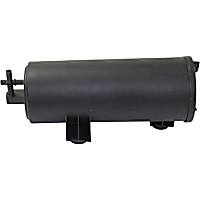 Vapor Canister
Vapor Canister
 Purge Valve
Purge Valve
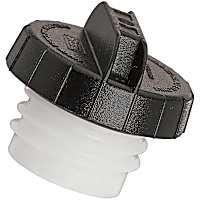 Gas Cap
Gas Cap
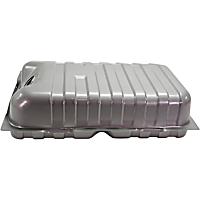 Fuel Tank
Fuel Tank
 Fuel Tank Pressure Sensor
Fuel Tank Pressure Sensor
